My very first experience with “bear viewing” wasn’t in Alaska, or even in a national park. It was on a family vacation in northern Michigan when I was quite young. Believe it or not, the local dump was the place to go. We weren’t the only ones. Cars lined up at dusk, waiting for the bears to appear. And they did. Families sat in their cars with the windows cracked, watching these magnificent creatures lumber through the refuse in search of scraps. At the time it felt exciting. Now, it makes me sad to think about.
Decades later, I’m still hooked on “bear viewing”. Chichagof Island in Alaska is known for having one of the highest brown bear populations in the world. So of course, while on a recent whale-watching trip to Hoonah, I wasn’t about to pass up the chance to squeeze in some “bear viewing.” Only this time the setting wasn’t a dump, it was the more natural setting of a temperate rainforest. The rivers were thick with salmon inside this part of Alaska’s Tongass, the largest intact temperate rainforest on Earth.
We waited for the bears to appear and soon enough, they did!
That’s when it hit me: “bear viewing” feels far too insignificant a name for what the experience really is. It’s not just about spotting and watching a bear. It’s about stepping into a much larger story, the timeless rhythm of the salmon run and the urgency of fattening up before winter.
And the tender persistence of cubs shadowing their mother’s every move.
In those moments, I felt the raw wildness of the bears and the immensity of the forest that holds them. Humbling. Grounding. Powerful.
Locals shared practical wisdom: “Park on the bridge, not on either side as that’s where the bears cross the road.” We followed their advice and were grateful we did. From our safe vantage point, we watched as bears padded silently across the road, massive and graceful all at once.
The best kind of bear viewing is about slowing down, watching without intruding, and letting wildness unfold on its own terms. I felt awe rise quietly, familiar, as I found myself fully present in the moment.
What stays with me most isn’t the thrill of a sighting or the photos I brought home. It’s the reminder that bear viewing is more than a tourist activity. It’s a glimpse into wildness that still endures, a chance to remember that these ecosystems sustain not only bears, but us as well. Like whale watching or birding, it’s not just about the spectacle. It’s about the respect and reverence we carry home afterward.
Heading out on a bear viewing adventure, I never know what I’ll see. But I do know this: I won’t know if I don’t go.
And in Hoonah…you just might even meet the Mayor!
© 2025 Jann Ledbetter. All photographs and written content are original works. Please do not reproduce without permission.






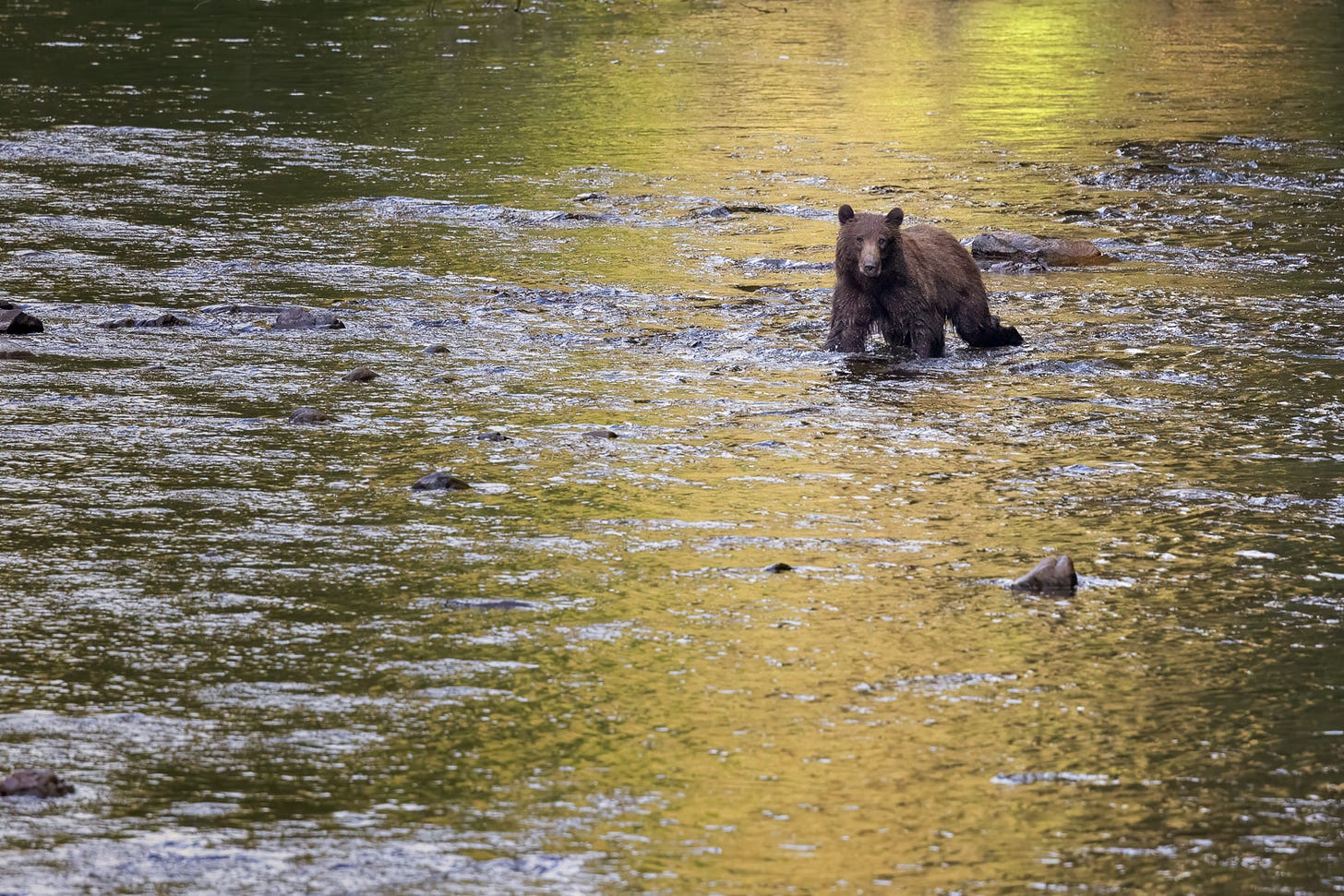


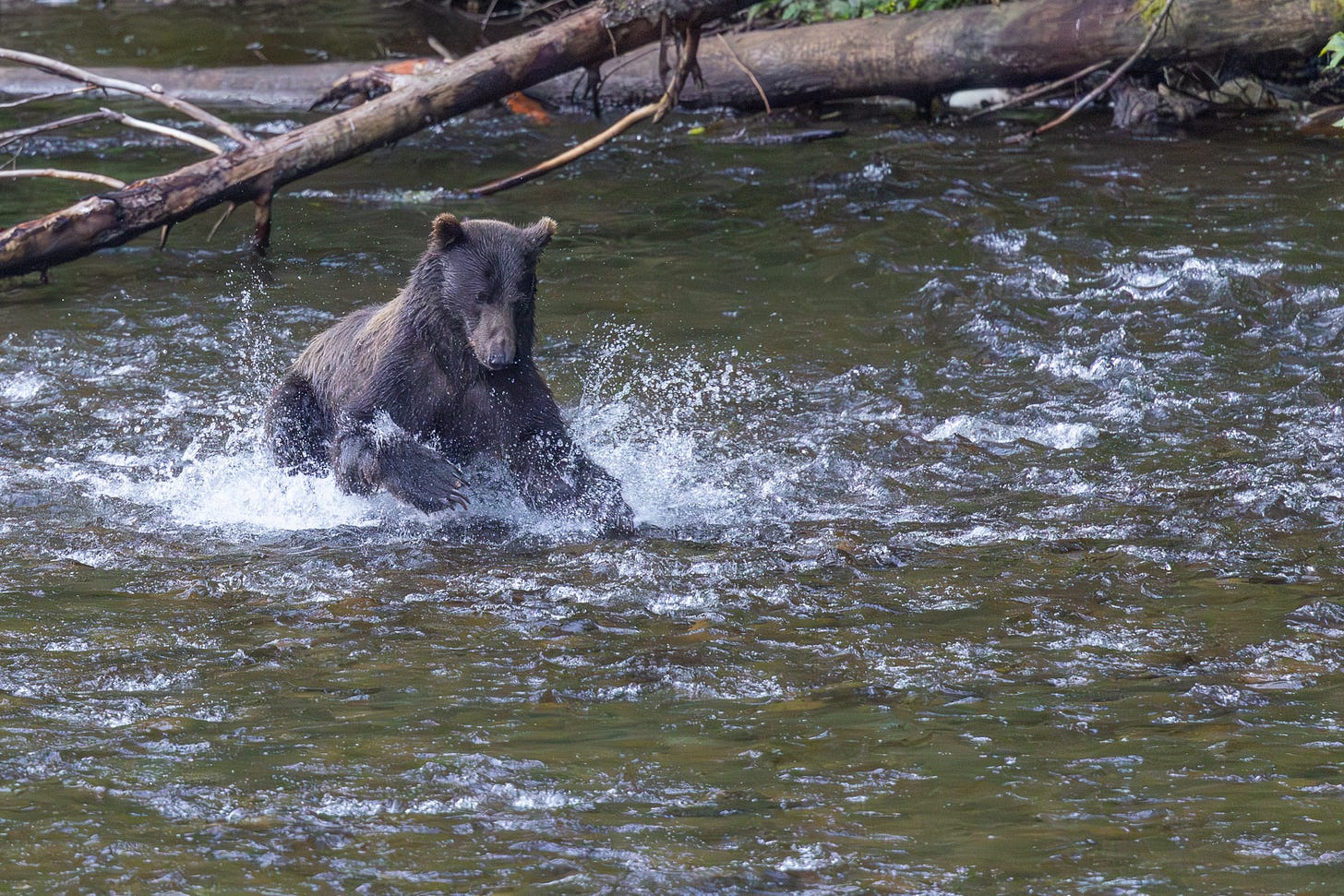
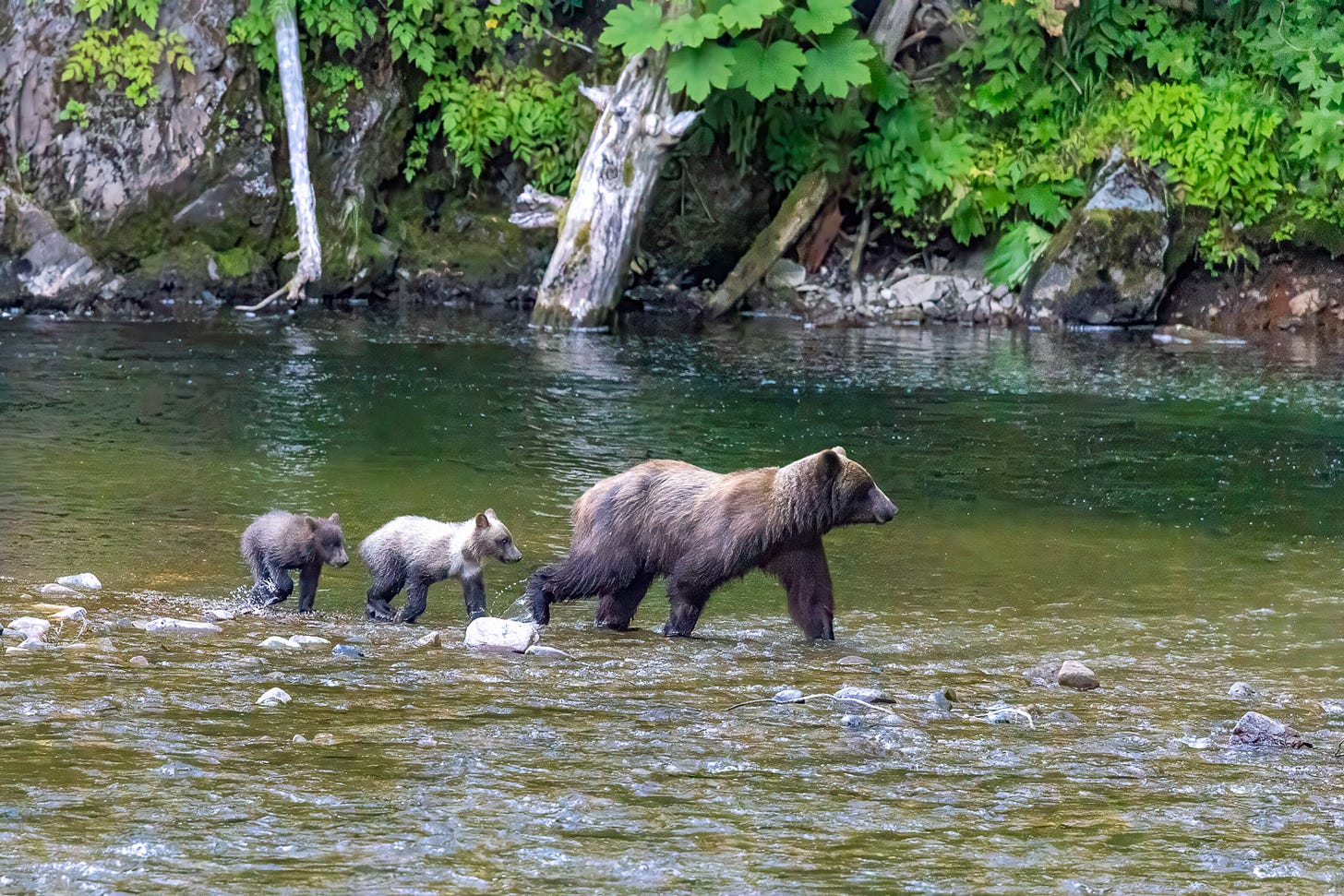
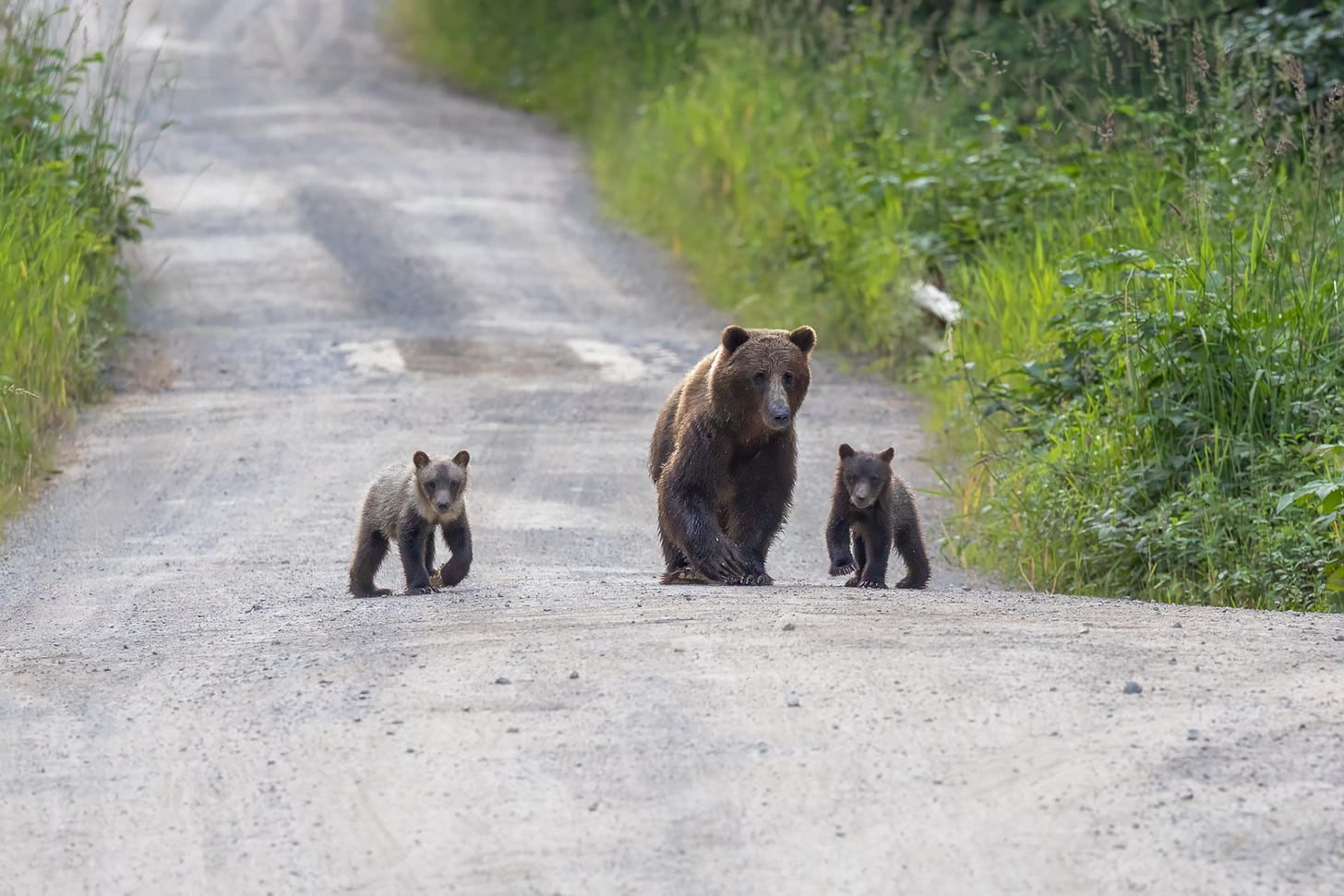

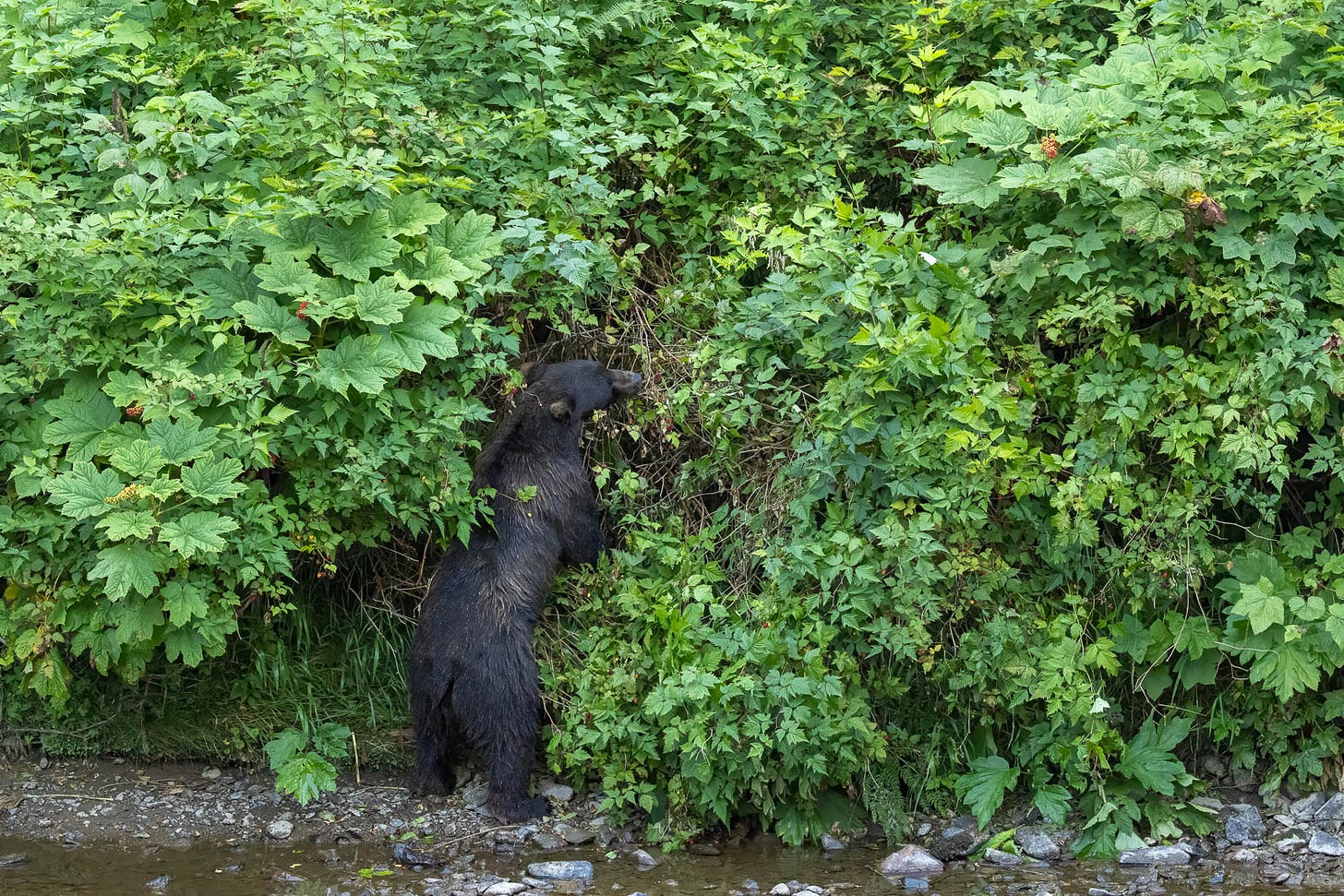
Loved your childhood story of ‘bear viewing’ in Michigan. The crazy pastimes we engage in as humans trying to be close to nature. It Reminded me of a childhood Girl Scout adventure to Catalina Island 26 miles off the coast of Los Angeles. At night, one of the camp counselors would take us to the camp dump site to watch for wild boars that would come down from the hillsides to scrounge for food scraps. On rare occasions, a wild bison living on the island would come down, too.
Recently, there have been sightings and reports of wild black bears coming down from the foothills of the Santa Monica Mountains in LA County to swim in the fancy swimming pools and to take out the trash of upscale homes. I guess if one knows where to look, they can find wildlife almost anywhere, even in big cities.
I love seeing your sequences of the bears’ behavior. Almost gives me the feeling of being there. I can almost hear the rushing water, the sound of gravel under foot, the smell of forest and soil and fish. You are a great story teller!
Jann, your photos are spectacular; your heart-felt perspectives even more so. Thank you.